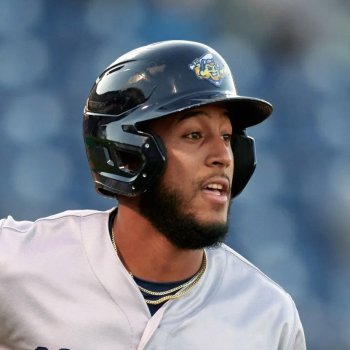
Twins Video
Probably most notable in terms of regression was Danny Santana. As a 23 year-old, Santana burst onto the scene manning the center field for Minnesota. Slashing .319/.353/.472 in his first big league season, the Dominican Republic product had made a great first impression. Unfortunately the numbers were inflated due to a ridiculous .405 BABIP (batting average on balls in play).
Santana was a candidate for extreme regression this past year, and it hit hard. He played 91 games for the Twins but slashed just .214/.241/.291, ending the season on the farm. Kennys Vargas saw a similar strong 2014 finish turn into an ugly 2015. Vargas followed up a .274/.316/.456 line in 2014 with a .240/.277/.349 line in 2015. He spent time at both Double- and Triple-A getting into just 58 big league games.
With the Twins looking to improve upon a promising 2015 season, there are a few players that regression could get to. For Molitor in 2016, it's about having the impact be felt at a significantly lesser level than the regression of Santana, Vargas, or even Kurt Suzuki last year.
It's a very curious situation when it comes to Miguel Sano, but there's some reason to believe he could experience regression in year two. After slashing .269/.385/.530 in his first 80 big league games, Sano set the bar high. His 18 homers and 52 runs batted in were more than impressive. What causes some concern is the 119 strikeouts, a pace that would have blown by the team record and likely would have led the big leagues.
Like Santana before him, Sano had a high BABIP (.396) a year ago. What is different however is that it's probably sustainable. With a 43.2% of balls being of the hard hit variety, Sano makes any batted ball he puts in play a difficult ask to field nearly half of the time. He also hit line drives at just under a 25% clip a season ago. Both of those numbers should bolster a respectable BABIP throughout his career.
Looking into Sano's strikeouts, there are two numbers the Twins slugger should be most focused on. In 2015, Sano swung at pitches outside of the strike zone 25.9% of the time. He also swung and missed at 15.7% of pitches. Should the slugger be able to decrease either of those marks, the expectation that his power will trump the whiff rate will remain extremely high.
Another guy with some uncertain peripherals going forward is standout left fielder, Eddie Rosario. After bursting onto the scene in a fashion very similar to Santana, it was Rosario who would have been the nicer asset to see moved instead of Aaron Hicks. Unfortunately, most teams around the big leagues see the same red flags when it comes to the Puerto Rican.
In his first big league season, Rosario put up a nice .267/.289/.459 slash line. The ugly number in there is that middle one. Rosario struck out 118 times in 122 games while drawing just 15 walks. For all of his advanced metrics ranking extremely well defensively, it's the offensive ones that scream a warning.
Rosario is far from a hulking hitter. Sure he collected 15 triples and slugged 13 homers, but he hit the ball hard just 29% of the time. On top of that, calling Rosario a free-swinger would be a massive understatement. Across his 2015 at-bats, Rosario swung at pitches outside of the strike zone a ridiculously 46% of the time. Despite chasing far too often, it is worth noting that he swung and missed just 14.5% of the time, a percentage less than that Sano's.
It's probably not in the cards for the Twins to completely redefine Rosario's approach. The task for Tom Brunansky though is going to be getting Rosario to develop a more professional approach in the box. Rather than chasing the marginal pitches, Rosario needs to sit and wait for his pitch more often. The walk rate absolutely has to increase; continuing on the current trajectory would provide even more cause for concern.
Going forward, there's little reason to believe that Miguel Sano is anything but a contributor for the Twins. Rosario remains a much riskier proposition in that department. Sano's ceiling is only going to be limited by the strikeouts he can shave off, while Rosario may have hit his without a retooled approach at the plate.
The Twins don't have as many major causes for concern in the regression department as they did a season ago, but both Sano's and Rosario's 2016 approach is one worth monitoring.
For more from Off The Baggy, click here. Follow @tlschwerz
MORE FROM TWINS DAILY
— Latest Twins coverage from our writers
— Recent Twins discussion in our forums
— Follow Twins Daily via Twitter, Facebook or email
— Become a Twins Daily Caretaker






Recommended Comments
Join the conversation
You can post now and register later. If you have an account, sign in now to post with your account.
Note: Your post will require moderator approval before it will be visible.